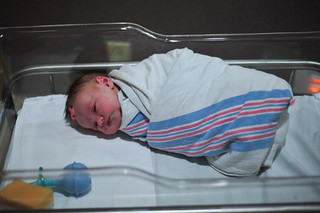The Dangers of Swaddling Your Baby
Swaddling is an age old practice that involves wrapping an infant in a tight blanket or cloth so all limb movement is tightly restricted. In years past, swaddling bands were also used to further restrict baby’s mobility. Swaddling was practiced for the warmth and security of the infant. It was proven to keep babies from being disturbed by their own startle reflex, and thereby keeping them calm. Also, it kept babies warm until their internal thermostat began to work. However, swaddling began to fall out of favor due to many safety and danger concerns over the years.
Safety Concerns
Due to incorrect wrapping that was too tight, various dangers for babies began surfacing. For example, wrapping a baby’s legs straight down could loosen their joints, while damaging soft cartilage in the hip sockets, which could lead to hip dysplasia.
Also, it was found that swaddled babies experienced interference with their mobility that led to many more developmental problems and pain. In the worse case scenarios, this method has been attributed to the death of many babies.
Infant Deaths
At least eight deaths were known to have occurred at various Minnesota day care centers during one year. All of the deaths occurred in smaller home facilities. Reports indicated that at least three quarters of around 86 deaths during the past 10 years involved sleeping infants. Each facility that was reviewed used swaddling techniques.
Accountability and Lawsuits
Wrongful death lawsuits have been filed by parents in states where providers were considered negligent as a result of swaddling. For example, a case in Minnesota surmised that what led to the death of a sleeping baby was asphyxiation as a result of the baby rolling over while being swaddled too tightly. The infant rolled onto his face and died after he was unable to change his position in order to breathe properly.
In California, a day care center was made to post nearly $700,000 bail on charges that they endangered infants’ lives while under their care. The case drew national attention after it was discovered that tight wrapping of babies inhibited their growth and sometimes resulted in death after rolling over and suffocating. These cases resulted in child abuse felony charges since standards of care were breached, causing a dangerous sleeping environment for the babies. In time, investigations by social service officials began as a result of all of the complaints from parents concerning child safety. Consequently, this alarming discovery prompted many parents, whose babies may have sustained similar injuries, to contact resources like Devorelawoffice.com and other legal counsel regarding their own litigation.
Swaddling Bans
After the many lawsuits concerning child safety, day care centers around the country began to move away from swaddling on their own. The National Resource Center on Child Health and Safety, along with the American Public Health Association and American Academy of Pediatrics, released a safety guide called Caring for Our Children, which set new standards of care for babies.
According to the new rules, swaddling is no longer considered necessary or recommended by any organization concerned with child care safety. It was also determined that all facilities should begin using stronger safety standards and eliminate all swaddling procedures. Therefore, care givers in some states are regularly urged to refrain from swaddling babies at any time. Also, swaddling is now illegal in child care centers in the entire state of Minnesota. It is expected that as safety cases build against swaddling, more states will issue laws regulating and banning the practice.
Jamica Bell is a freelance writer and concerned parent providing this research for parents and child care givers of infants. Kevin W. Devore is a Minnesota criminal law attorney who is dedicated to defending families whose children have suffered personal injury while under the supervision of a daycare facility, and provides his clients with information regarding a myriad of legal situations.
Photo credit: http://flic.kr/p/61EbUD

